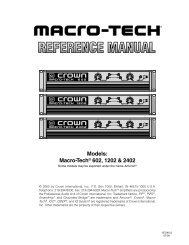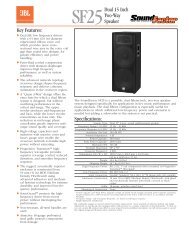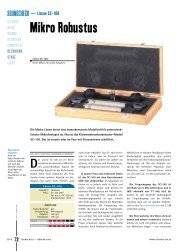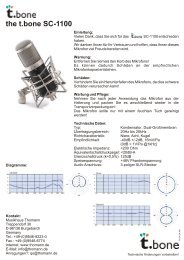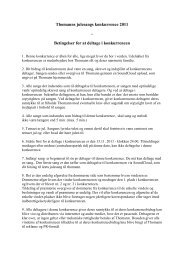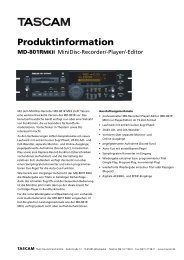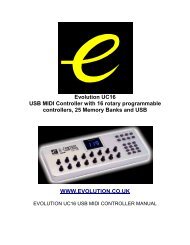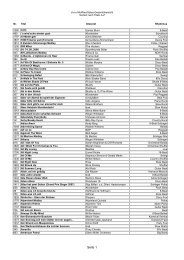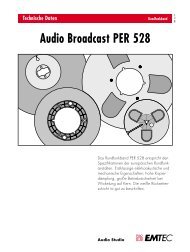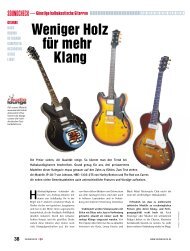Hammerfall® DSP System Multiface
Hammerfall® DSP System Multiface
Hammerfall® DSP System Multiface
You also want an ePaper? Increase the reach of your titles
YUMPU automatically turns print PDFs into web optimized ePapers that Google loves.
16. Hotline - Troubleshooting<br />
16.1 General<br />
The newest information can always be found on our website www.rme-audio.com, section<br />
MacOS, Hammerfall <strong>DSP</strong> Support.<br />
The ADAT timecode is not in sync<br />
• The tape is formatted to 48 kHz, but played back at 44.1 kHz (Pitch). This 'Blackface'<br />
problem cannot be solved in a satisfactory way.<br />
ADAT timecode is running, but Cubase does not start 'Play' automatically<br />
• The input displayed in ‘Sync Ref’ is not in sync mode. Sync mode is essential, because<br />
ADAT’s so-called time code is really a sample position, and is therefore only valid for<br />
synchronous audio data.<br />
• Sync is displayed (referring to the card’s clock), but the incoming data is not in sync with the<br />
sample position received at the ADAT Sync In. Then Cubase does not start. Remedy: Set<br />
‘Pref. Sync Ref’ to the input corresponding to the received ADAT Sync signal.<br />
• Sync mode wasn't activated (button in the transport panel), or ASIO 2.0 has not been<br />
chosen as the SMPTE sync source.<br />
The input signal cannot be monitored in real-time<br />
• ASIO Direct Monitoring has not been enabled, and/or monitoring has been globally disabled.<br />
The 8 ADAT channels do not appear at the output<br />
• The optical output has been switched to SPDIF. Nevertheless you can use the 8<br />
corresponding playback tracks, by using TotalMix and mixing/routing them to other physical<br />
outputs.<br />
Playback works, but record doesn’t:<br />
• Check that there is a valid signal at the input. If so, the current sample frequency is<br />
displayed in the Settings dialog.<br />
• Check whether the Hammerfall <strong>DSP</strong> has been selected as recording device in the audio<br />
application.<br />
• Check whether the sample frequency set in the audio application (‘Recording properties’ or<br />
similar) matches the input signal.<br />
• Check that cables/devices have not been connected in a closed loop. If so, set the<br />
systems’s clock mode to ‘Master’.<br />
Crackle during record or playback:<br />
• Increase the number and size of buffers in the ‘Settings’ dialog or in the application.<br />
• Try different cables (coaxial or optical) to rule out any defects here.<br />
• Check that cables/devices have not been connected in a closed loop. If so, set the system’s<br />
clock mode to ‘Master’.<br />
• Increase the buffer size of the hard disk cache.<br />
The performance with emagic's Logic is poor<br />
• Ensure that 'Alt.ASIO Mode' is checked (RME DIGI Settings, Options). This setting can be<br />
changed on the fly.<br />
User’s Guide H<strong>DSP</strong> <strong>System</strong> <strong>Multiface</strong> © RME 28



